Mandu, Korean dumplings filled with juicy pork, cabbage, and glass noodles, are easier to make at home than you think. This homemade version is freezer-friendly and perfect any time of year—not just on Lunar New Year.
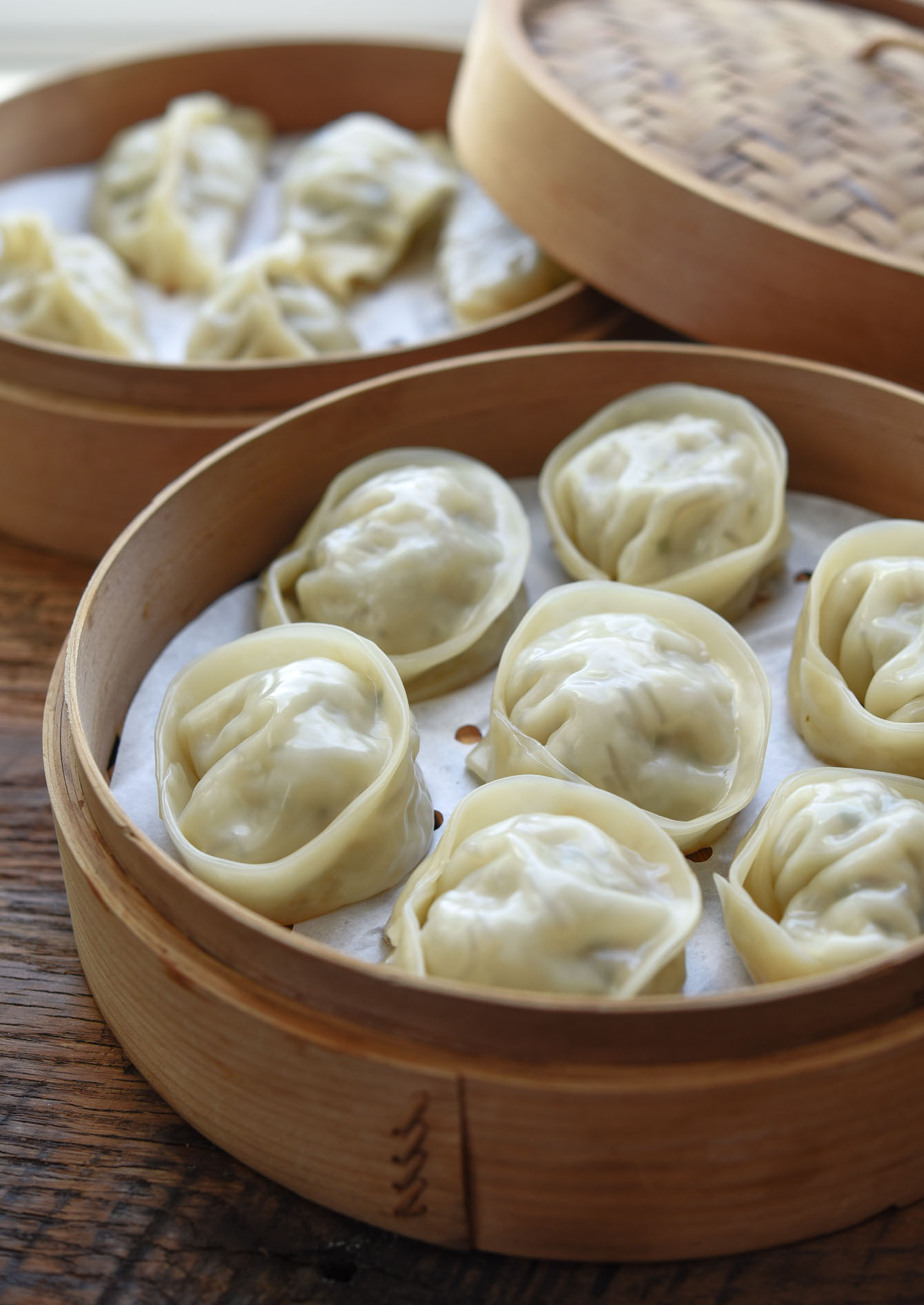
In my family, making mandu—Korean dumplings—was a must during the holidays, especially around Lunar New Year. My mom would prepare the pork and vegetable filling, and the rest of us would sit around the table folding dumplings, laughing, and sharing stories. It was a tradition that made the holiday feel whole.
These days, I don’t wait for a special occasion. Whenever we’re craving juicy pork dumplings, we make a big batch of homemade mandu together.
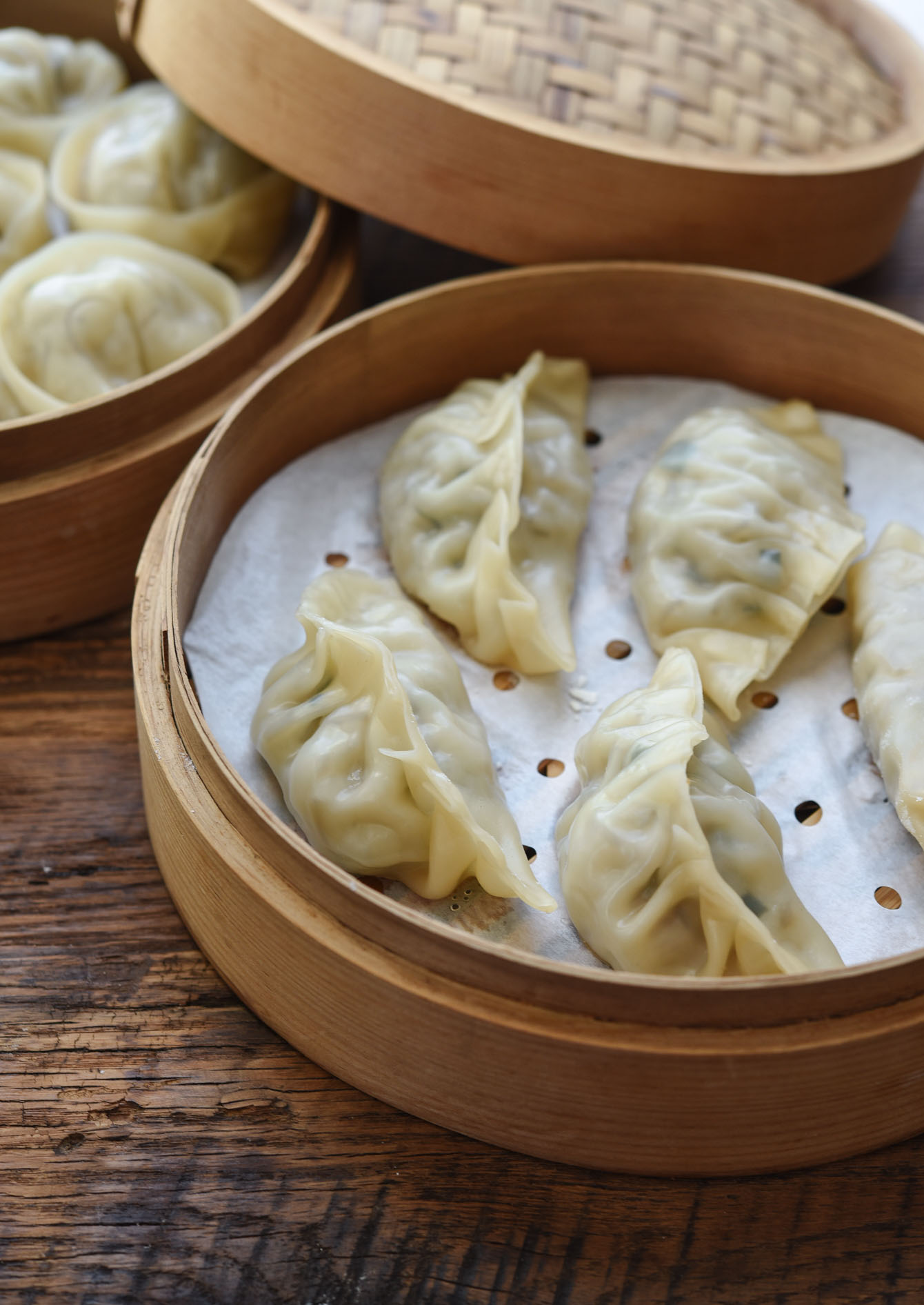

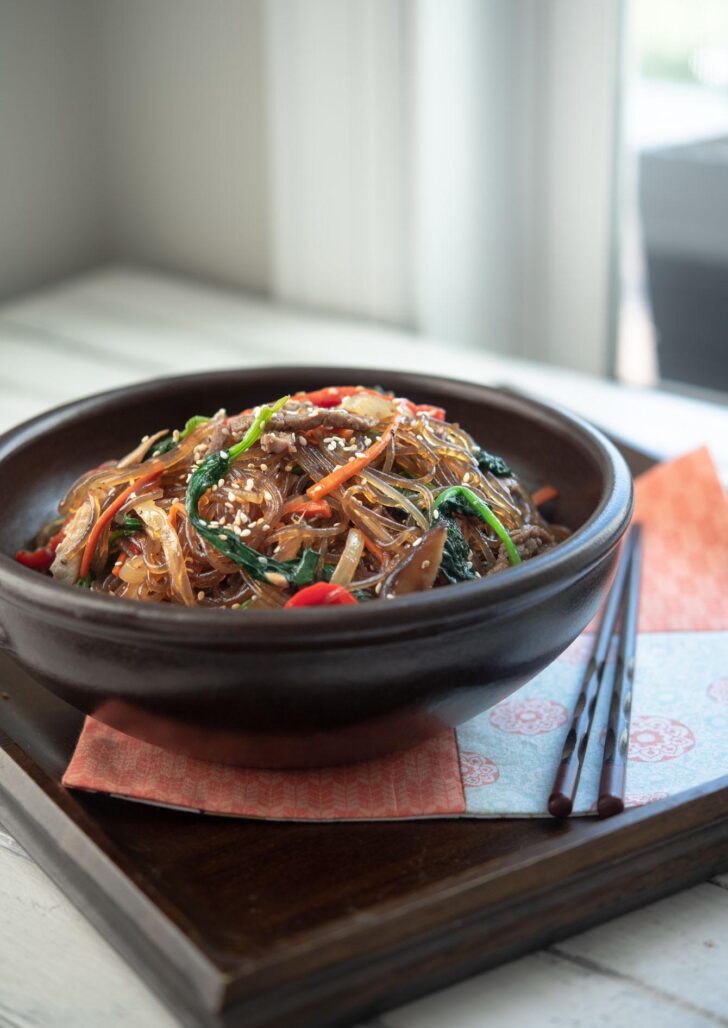

Get new recipes via email:
Sure, you can buy frozen Korean dumplings at the store now, but they don’t compare to the flavor and texture of freshly made ones. That’s why we always make extra and freeze them—so we can enjoy them anytime, all year round.
You can use these mandu to make scientists (Korean dumpling soup) or add them to a bubbling pot of budae jjigae (Korean army stew)where mandu adds extra heartiness. They’re also perfect for pan-frying into gun-mandu (crispy pan-fried dumplings), also known as yaki mandu—great for snacks or party platters.
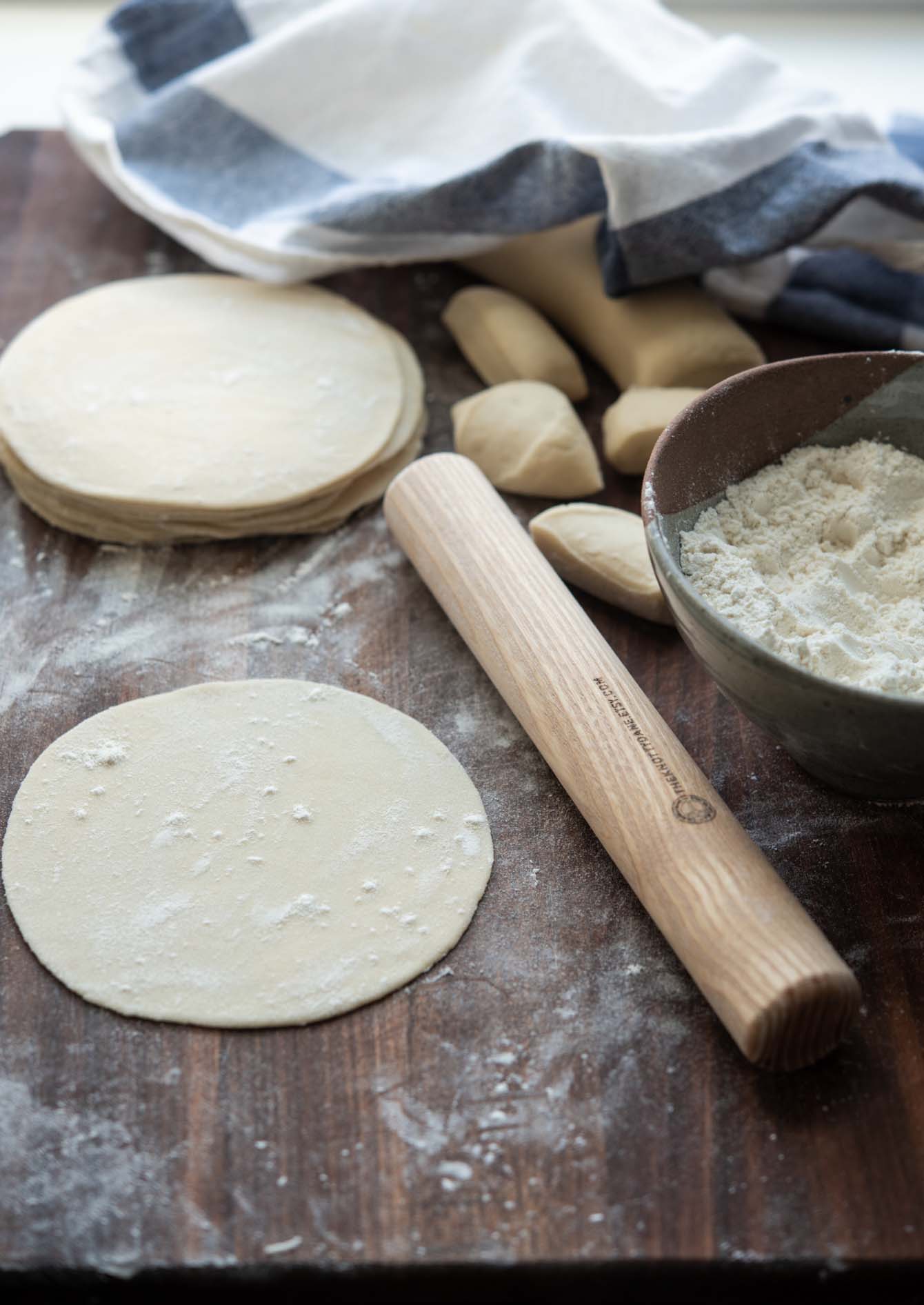

Dumpling Wrappers for Mandu
Good mandu starts with the right wrapper. I always remember how my mother would make dumpling wrappers from scratch—and back then, most Korean home cooks did the same.
Pre-made wrappers weren’t so common, so making your own mandu-pi (만두피) was just part of the process. It gave the dumplings that soft, chewy texture we all loved, with just the right thickness to hold in the juicy filling without tearing.
If you’d like to try it yourself, I’ve shared my homemade dumpling wrapper recipe using flour, sweet rice flour, and cornstarch. It’s easier than you think and gives you that authentic Korean dumpling texture.
In a pinch, store-bought wrappers will work fine too. Look for ones around 5 inches (13 cm) in diameter to get the proper Korean-style mandu size and feel.
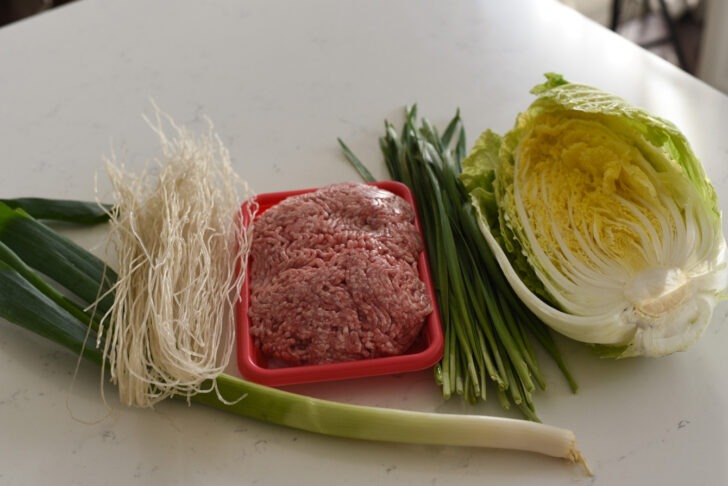

Mandu filling
While the wrapper gives mandu its shape, it’s the filling, mandu-so (만두소), that brings all the flavor. This version is a classic pork dumpling (gogi mandu, 고기만두), made with ground pork, napa cabbage, Asian chives, and Korean glass noodles (dangmyeon).
For the best texture and taste, use ground pork with a bit of fat—an 80/20 ratio keeps the filling juicy during cooking. My recipe also includes chopped dangmyeon (Korean glass noodles), which adds a light, chewy texture unique to Korean dumplings.


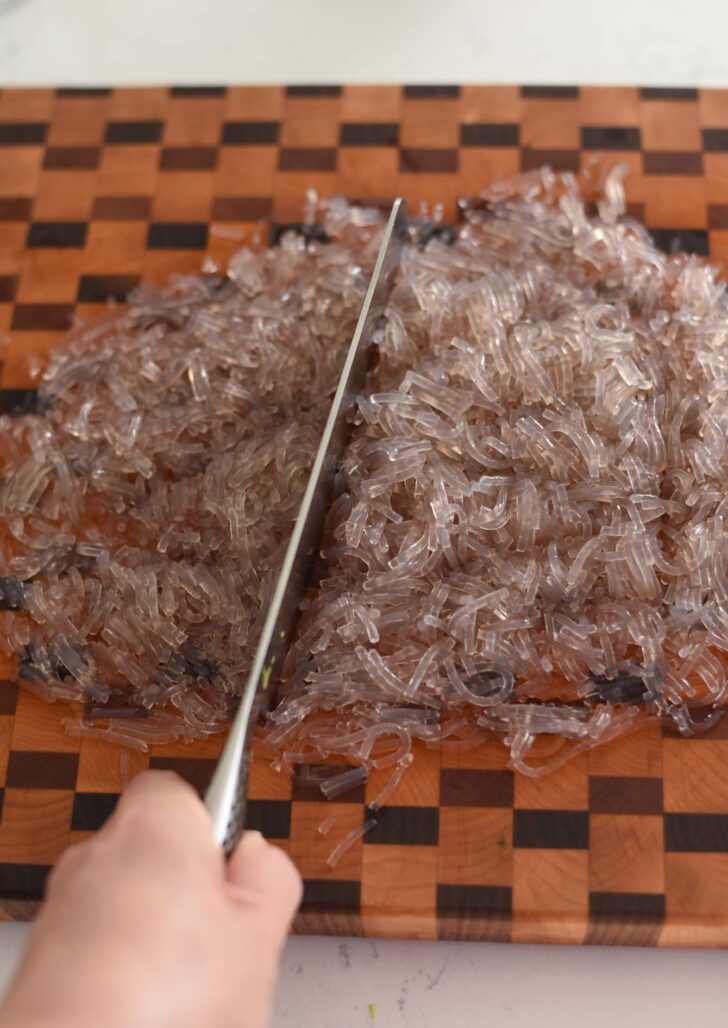

To make the filling, salt the chopped cabbage and let it sit for a few minutes, then squeeze out the moisture. Cook the glass noodles and chop them finely.
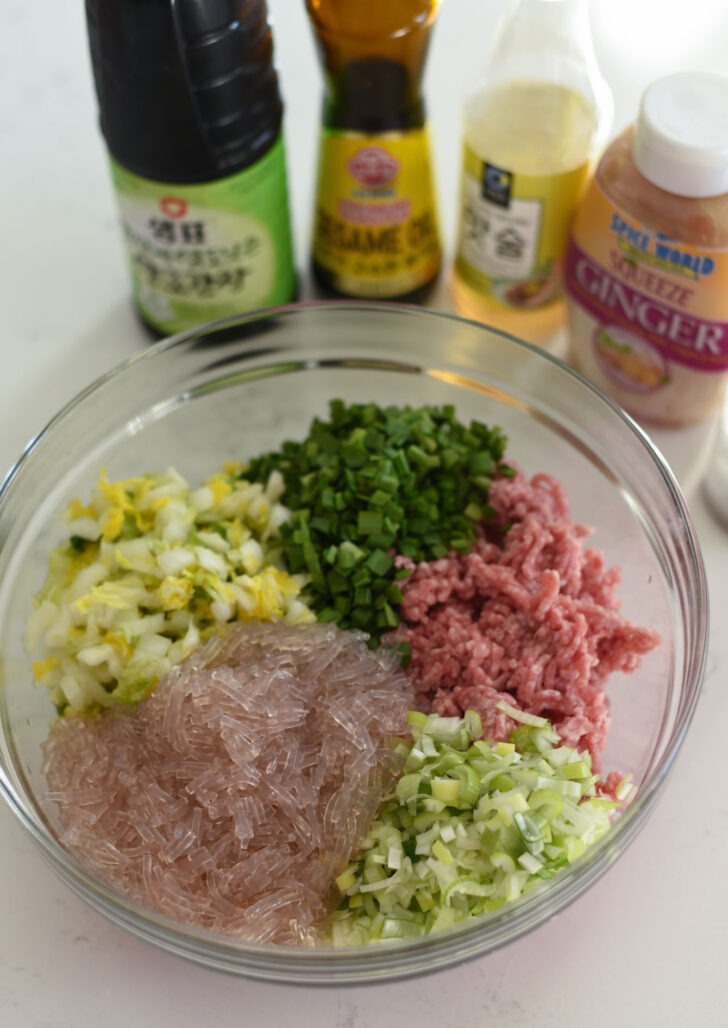

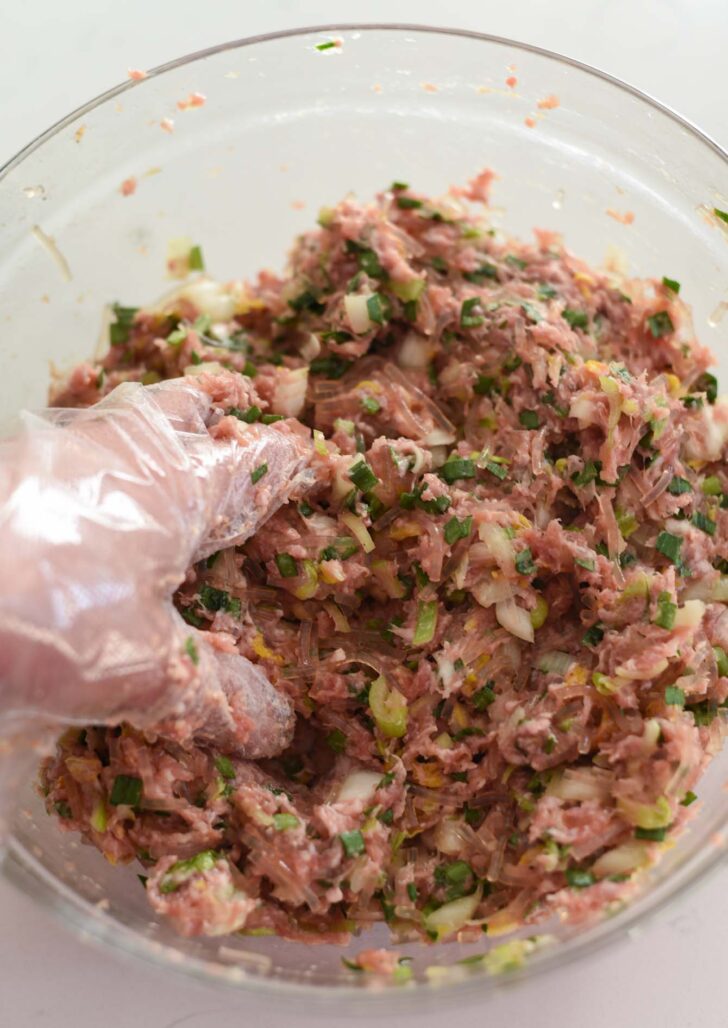

Combine all the filling ingredients in a mixing bowl. Season the mixture with classic Korean pantry ingredients like soy sauce, mirim, and sesame oil. These add a savory, nutty depth—especially important when you’re working with a mild base like pork and cabbage.
If you’re curious about other fillings, check out my then grip made with tofu and aged kimchi—another popular variation in Korean homes.
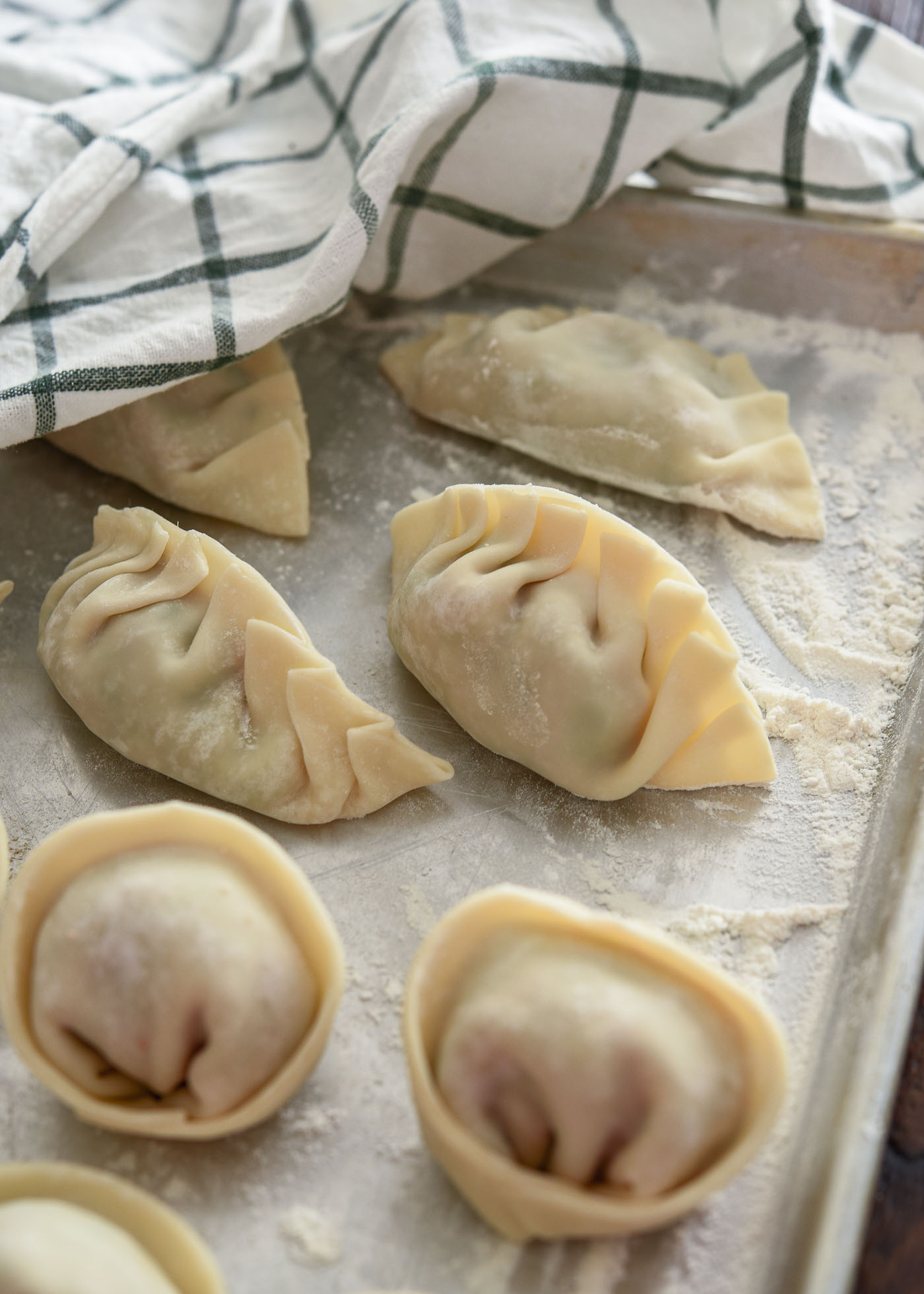

How to Fold Mandu (Korean Dumpling)
My mother used to say, “If you can fold a pretty dumpling, you’ll have a good-looking son. If you can shape songpyeon just right, you’ll have a beautiful daughter.”
Well—I ended up with both, so maybe she was onto something.
There are countless ways to fold Korean dumplings, from simple to elaborate. But when we make a big batch at home, I stick with these two classic styles—they’re easy, practical, and look great on the plate.
Scroll through the photos below for a quick visual guide.
Moon shape
This is the most common folding style for steamed mandu or dumpling soup (mandu-guk).


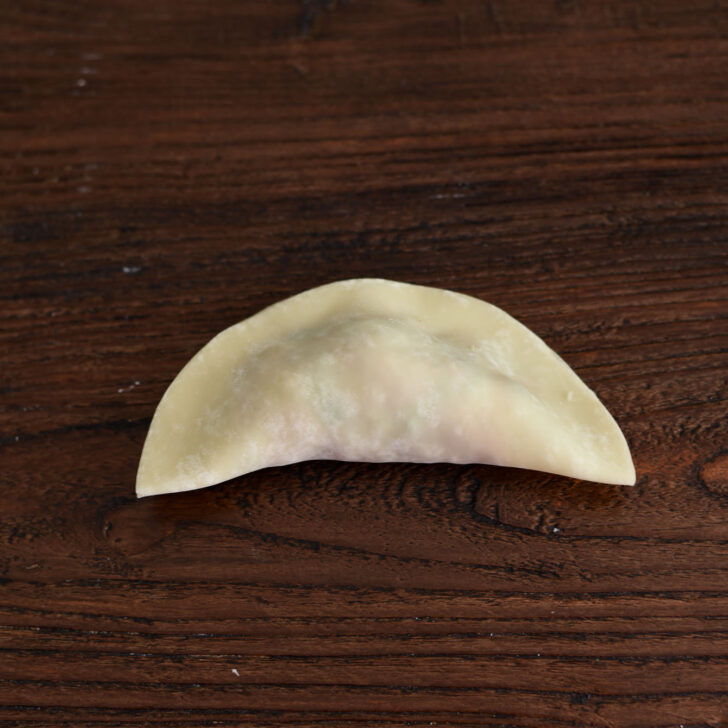

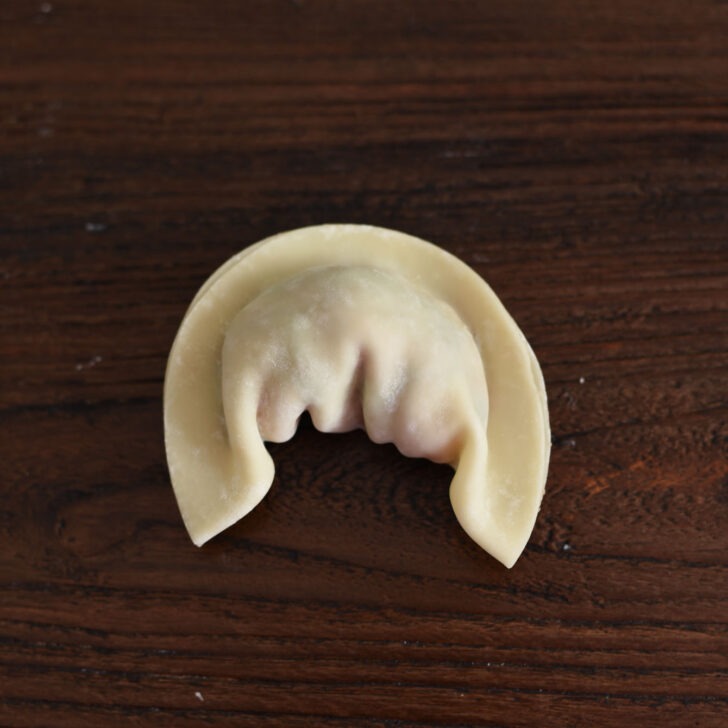

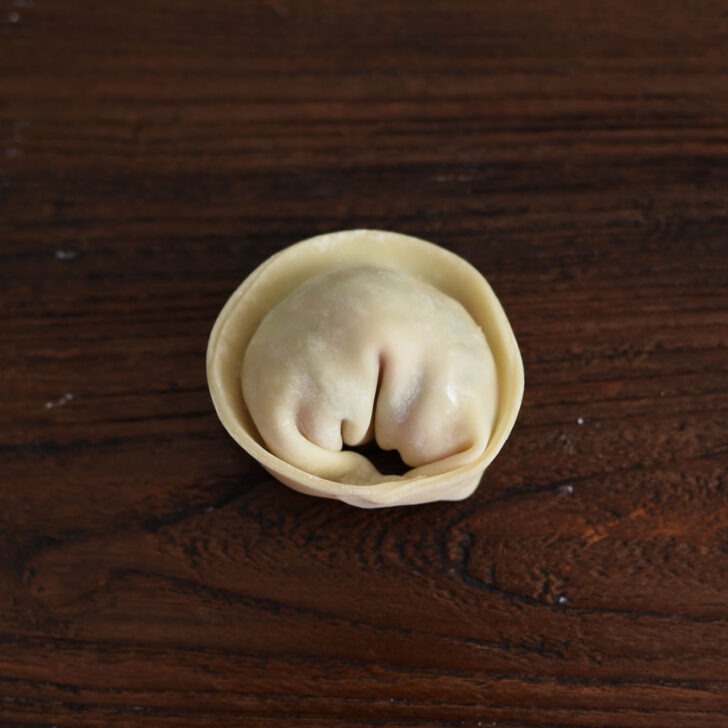

To make the shape, add filling, wet the edges with water, fold the wrapper in half, and bring the ends together to form a crescent. Easy, right?
Pleated shape
Great for pan-fried dumplings (gun-mandu) or steaming when you want something a little fancier.
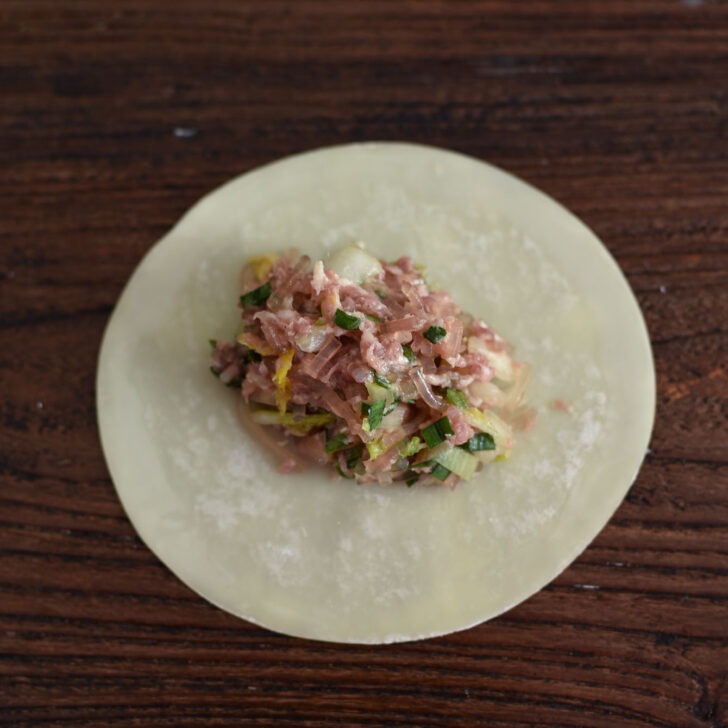

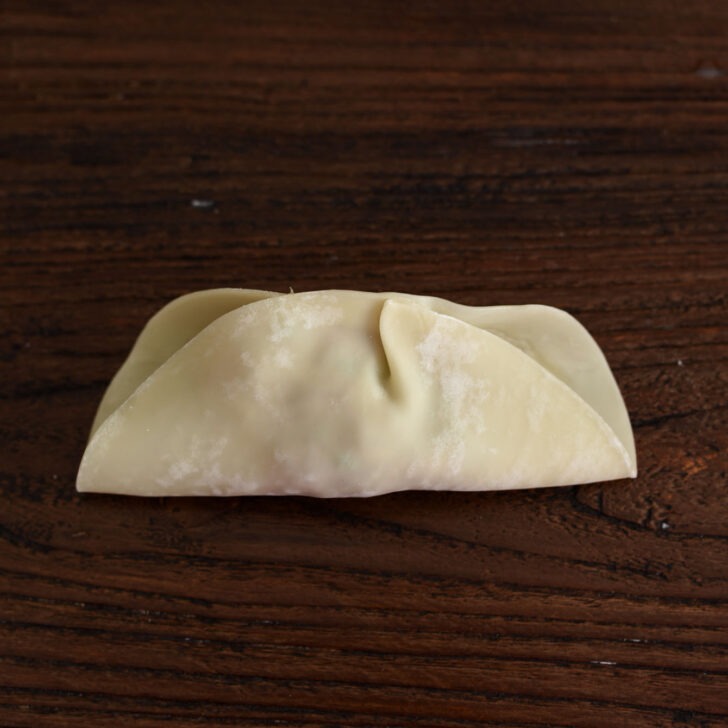

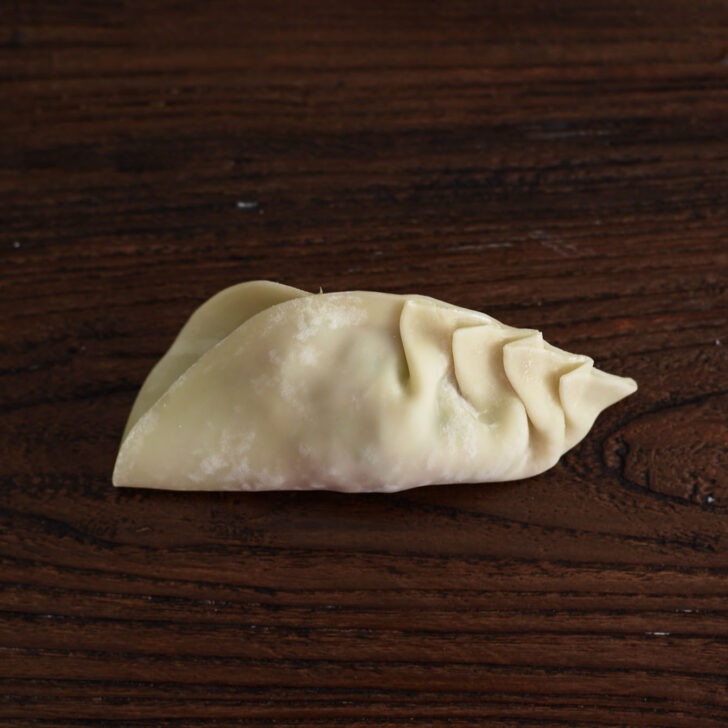



For the pleated style, repeat the same with the filling, then fold the wrapper in half and make small pleats toward the center on each side.
Tip: If you’re new to folding dumplings, start with a smaller amount of filling—it makes sealing easier and helps prevent tearing.
Once you’ve shaped them, cook your mandu how you like—steamed, pan-fried, boiled, or deep-fried. For detailed, step-by-step instructions, check the recipe card below.


What to Serve with Mandu
These dumplings are best enjoyed hot, with a simple mandu dipping sauce made from soy sauce, vinegar, and a touch of Korean chili flakes (gochugaru). It’s salty, tangy, and just spicy enough to complement the juicy filling.
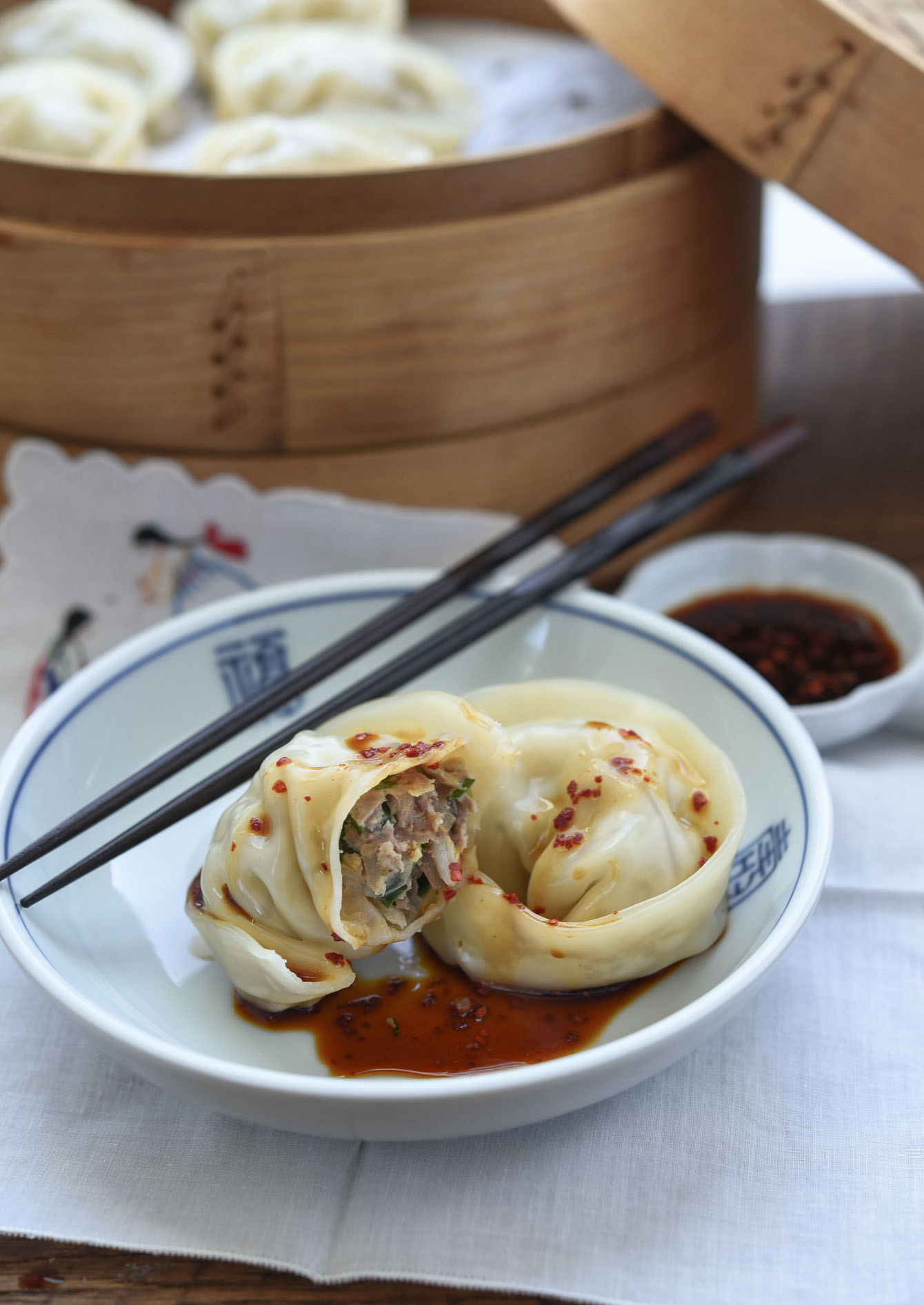

Freezing Tips
If you’re making a big batch (which I always do), freezing mandu is a great way to enjoy them later without the extra work.
To freeze, place mandu on a floured tray in a single layer so they don’t stick. Freeze until solid, then store in bags up to 3 months. No need to thaw—just cook a bit longer from frozen.
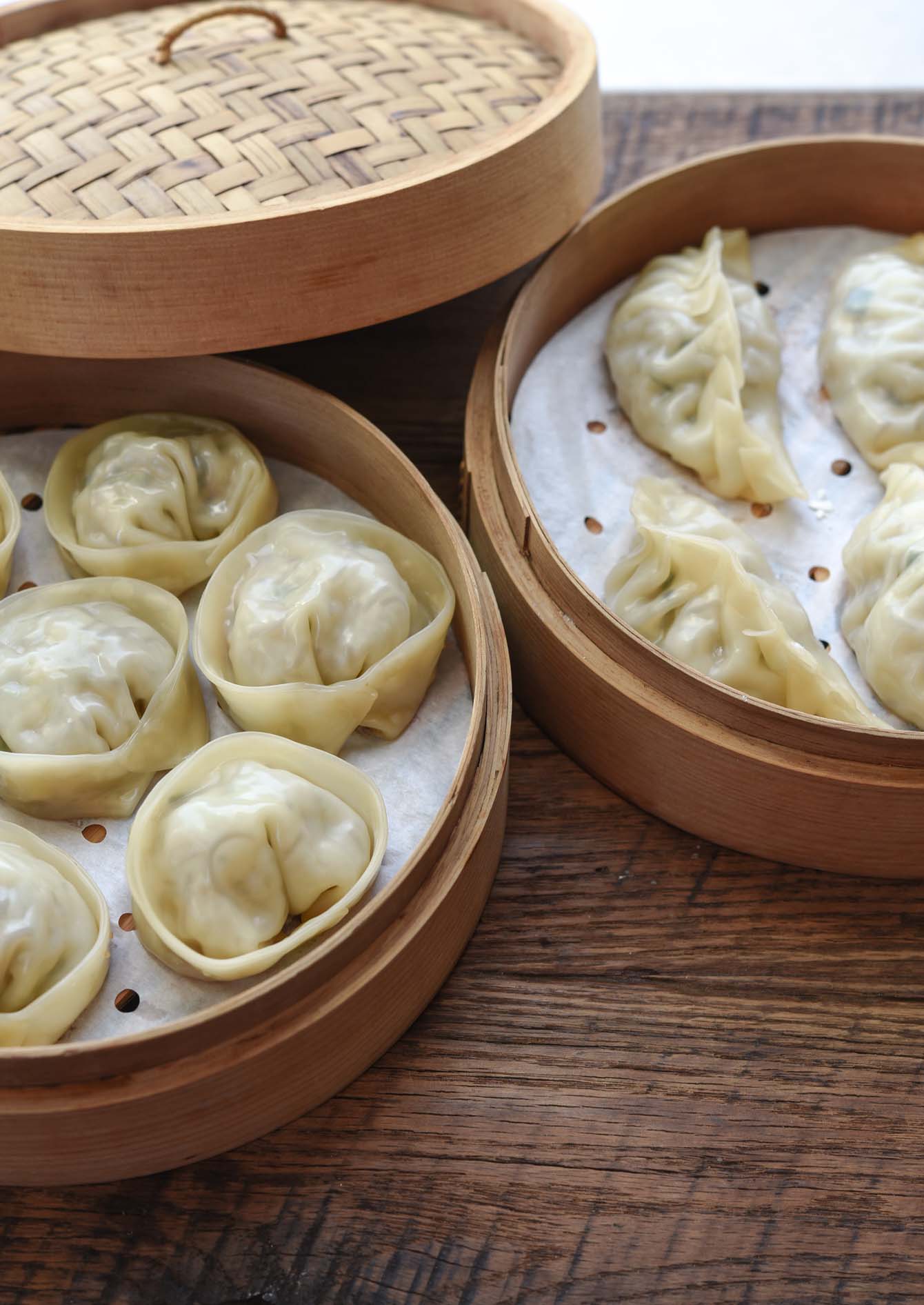

Love this recipe? Rate it and share your experience in the comments below! On Instagram? Tag me to showcase your creation. For more delicious recipes, subscribe to our newsletter!
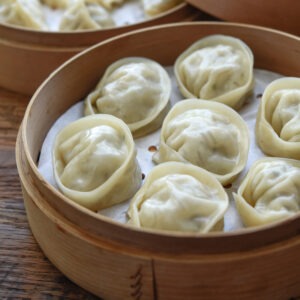

Homemade Mandu (Korean Dumplings)
Mandu, Korean dumplings filled with pork, cabbage, chives, and glass noodles. Juicy, flavorful, and easy to steam, pan-fry, or freeze at home.
To make the mandu filling
-
Chop napa cabbage very finely and put it in a mixing bowl. Sprinkle 1 tsp salt and toss together; let it sit for 10 minutes. When the cabbage becomes lifeless, squeeze it out to get rid of moisture.
-
Boil Korean sweet potato noodles according to the package directions, about 6-7 minutes. Rinse in cold water and drain well. Chop into small pieces.
-
Put pork, cabbage, chives, leeks, and noodles in a large mixing bowl. Season with soy sauce, sweet rice wine, ginger, sesame oil, and pepper; mix well with your hand until all the ingredients are well incorporated. Note: This recipe makes 40 large dumplings.
To shape half moon dumplings
-
Put a heaping tablespoon of filling in the middle of wrapper, wet the edges of wrapper with water using your finger. Fold the wrapper in half and pinch the edges together. Bring the both ends toward the center. Pinch the ends together to complete.
To shape pleated dumplings
-
Put some filling in the middle of the wrapper and wet the edges with water using your finger. Bring one edge to the other and pinch in the center first, then make a small pleat on one side facing toward the center. Continue to make more pleats, usually about 4 pleats. Create the same number of pleats on the other side, facing the pleats toward the center.
Cooking Method Options:
-
Steamed (JJIN-MANANDU): Line a bamboo steamer (or regular steamer) with steam liner or a kitchen cloth to prevent sticking. Place dumplings without touching. Set the steamer over simmering water, cover, and steam for 5–6 minutes until fully cooked.Pan-fried (gun-gunda): Heat 1–2 tablespoons of oil in a skillet over medium heat. Place dumplings flat-side down and cook until golden brown on the bottom (about 2–3 minutes). Add 2–3 tablespoons of water, cover with a lid, and steam for another 3–4 minutes until the water evaporates.Deep-fried (Tuigin-Mandu): Heat oil to 350°F (175°C). Fry dumplings in batches until golden and crispy, about 3–4 minutes. Drain on paper towels before serving.Boiled (Mul-Mandu): Bring a large pot of water to a boil. Add dumplings and stir gently. Cook until they float to the surface (about 4–5 minutes). Remove with a slotted spoon and serve hot.
Freezing Tips: To freeze, arrange dumplings on a floured tray in a single layer, making sure they don’t touch. Freeze until solid (about 1 hour), then transfer to freezer bags. Cook from frozen—no need to thaw. Just add 1–2 extra minutes to the cooking time.
Calories: 425kcal, Carbohydrates: 38g, Protein: 21g, Fat: 21g, Saturated Fat: 7g, Polyunsaturated Fat: 3g, Monounsaturated Fat: 9g, Cholesterol: 65mg, Sodium: 1357mg, Potassium: 545mg, Fiber: 3g, Sugar: 3g, Vitamin A: 1822IU, Vitamin C: 30mg, Calcium: 105mg, Iron: 4mg
